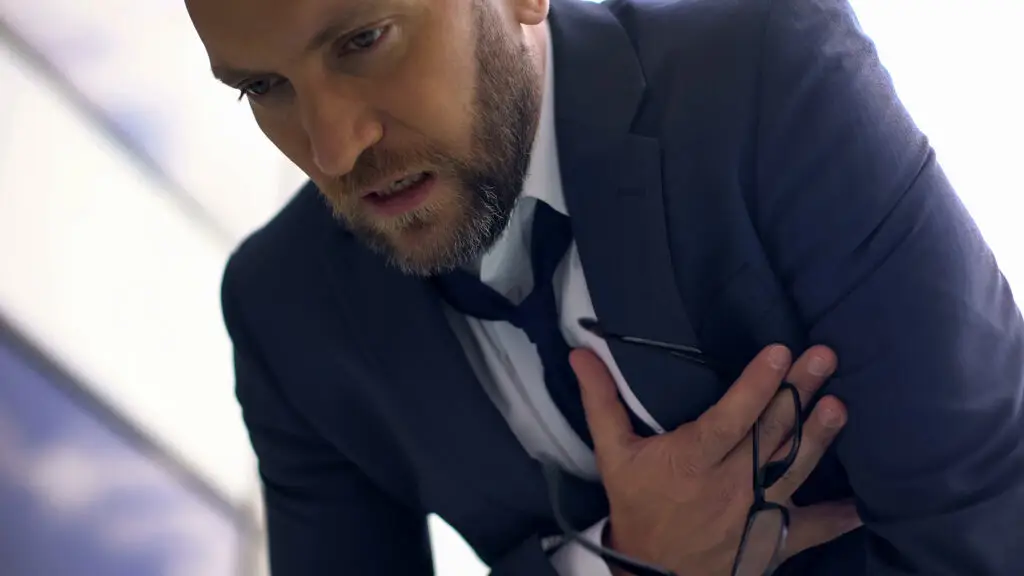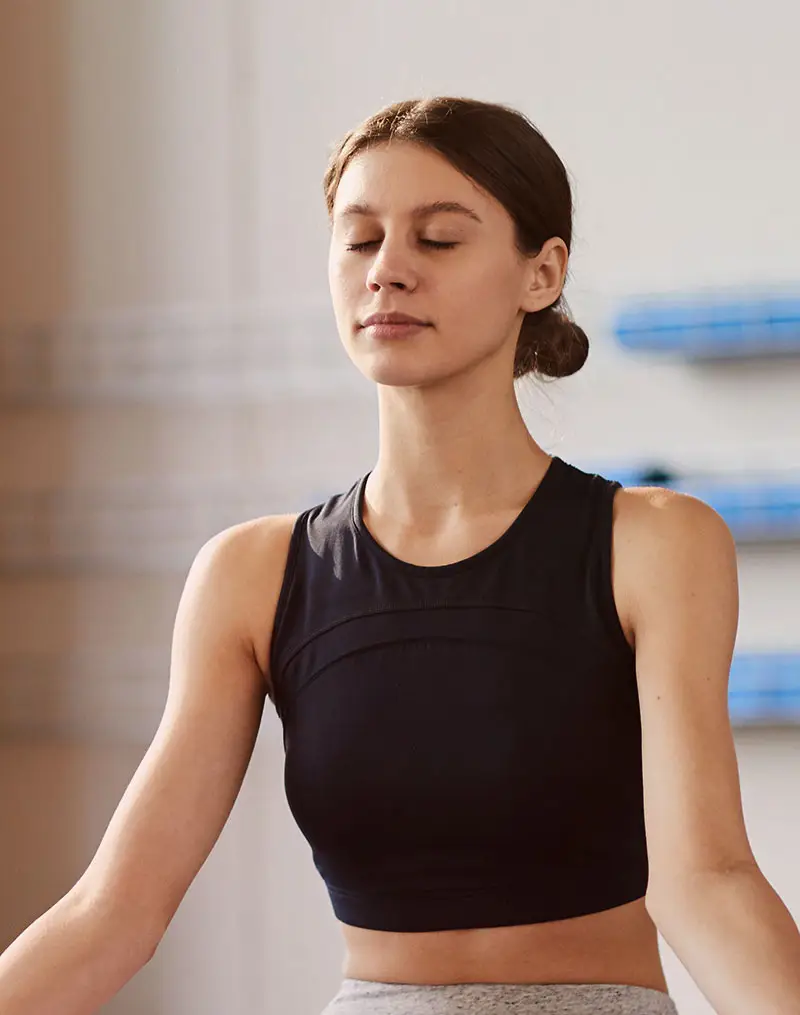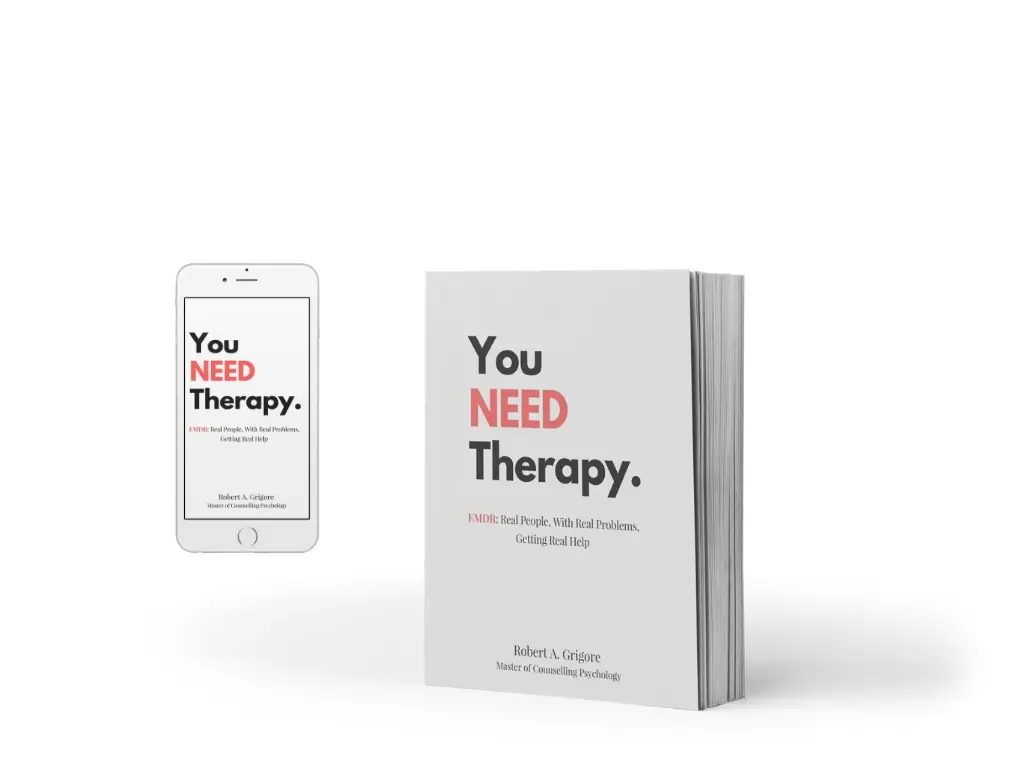Unlocking Inner Peace: Mastering Anxiety with Powerful Breathing Techniques (EMDR Tools)
In today’s fast-paced world, anxiety has become a common affliction that affects over 300 million people worldwide according to the World Health Organization. If you find yourself constantly overwhelmed by worry and stress, it’s time to take control of your mental well-being. In this article, we will delve into powerful breathing techniques that can help you master anxiety, which can even help in preparation for EMDR therapy.
EMDR (Eye Movement Desensitization and Reprocessing) is a renowned psychotherapy method that has been proven effective in treating anxiety disorders, phobias, and post-traumatic stress disorder (PTSD). By combining EMDR with deep breathing exercises, you can enhance the therapeutic benefits and unlock inner peace.
Through controlled and focused breathing, you can activate the body’s relaxation response, calming your nervous system and reducing anxiety symptoms. These breathing techniques complement the eye movements and bilateral stimulation used in EMDR, helping you prepare for the desensitization phase in the therapy process and to cope better with stressful life events at any time in life.
In this article, we will explore different breathing exercises and their application in EMDR preparation, providing you with the tools you need to conquer anxiety and cultivate inner peace. Say goodbye to anxiety and hello to a more peaceful mind and life.

Understanding anxiety and its impact on mental health
Anxiety is a common and often debilitating mental health condition that affects millions of people worldwide. It is characterized by persistent feelings of worry, fear, and unease that can significantly impact an individual’s daily life. Anxiety disorders can take various forms, such as generalized anxiety disorder, social anxiety, panic disorder, and post-traumatic stress disorder (PTSD).
The impact of anxiety on mental health is multifaceted. Individuals struggling with anxiety may experience physical symptoms like rapid heartbeat, sweating, and muscle tension, as well as psychological symptoms such as intrusive thoughts, difficulty concentrating, and feelings of dread. These symptoms can lead to a vicious cycle, where the physical manifestations of anxiety exacerbate the mental distress, creating a challenging and overwhelming experience.
The far-reaching effects of anxiety extend beyond the individual, impacting various aspects of life, including relationships, work, and overall well-being. Chronic anxiety can contribute to the development of other mental health conditions, such as depression, and can even have detrimental effects on physical health, increasing the risk of heart disease, gastrointestinal issues, and other health problems. Understanding the profound impact of anxiety on mental health is the first step in empowering individuals to take control of their well-being and embark on a journey towards inner peace and resilience.
How breathing techniques can help reduce anxiety
Amidst the overwhelming challenges posed by anxiety, there is a powerful tool that can help individuals regain a sense of control and calm: breathing techniques. These simple yet effective practices have the ability to transform the way the body and mind respond to anxiety-provoking situations.
At the core of breathing techniques is the principle of activating the body’s relaxation response, which counteracts the stress response triggered by anxiety. By focusing on the breath and engaging in controlled, deliberate breathing patterns, individuals can elicit a physiological shift that calms the nervous system, reduces muscle tension, and alleviates the physical symptoms of anxiety.
The benefits of breathing techniques extend far beyond the immediate reduction of anxiety symptoms. Regular practice can lead to long-term improvements in emotional regulation, stress management, and overall well-being. By incorporating these techniques into their daily routines, individuals can develop a powerful toolkit to manage anxiety and cultivate a greater sense of inner peace and resilience.

The science behind breathing techniques and their effects on the nervous system
The science behind the effectiveness of breathing techniques in reducing anxiety lies in the intricate connection between the respiratory system and the nervous system. When we experience anxiety, the sympathetic nervous system is activated, triggering the “fight-or-flight” response. This response leads to a cascade of physiological changes, including increased heart rate, elevated blood pressure, and shallow breathing.
Breathing techniques, such as diaphragmatic breathing, work by engaging the parasympathetic nervous system, which is responsible for the “rest-and-digest” response. By taking slow, deep breaths and focusing on the movement of the diaphragm, individuals can stimulate the vagus nerve, which plays a crucial role in regulating the autonomic nervous system.
The vagus nerve, often referred to as the “wandering nerve,” is a key component in the parasympathetic nervous system. When activated through controlled breathing, it sends signals to the brain that promote relaxation, lowering the heart rate, blood pressure, and cortisol levels (the primary stress hormone). This physiological shift helps to counteract the effects of the sympathetic nervous system, reducing the physical symptoms of anxiety and creating a sense of calm and inner peace.
Types of breathing techniques for anxiety relief
To effectively manage anxiety through breathing techniques, it is essential to explore the various methods available and find the ones that resonate most with your individual needs and preferences. Here are some of the most well-known (and some brand new) and effective breathing techniques for anxiety relief:
Diaphragmatic breathing (as shown above) (also known as belly breathing or abdominal breathing): This technique involves taking slow, deep breaths by expanding the abdomen rather than the chest. This type of breathing helps to activate the parasympathetic nervous system and promote relaxation.
Eye Rolls: This technique (shown above in the video) involves inhaling via the nose with a diaphragmatic breath very slowly and simultaneously looking up slowly (following the pace of the breath), then exhaling through the mouth and simultaneously following the exhalation by lowering the eye gaze.
Tongue Decompressions: One of my favourite techniques that I just happened to discover through listening to a Gabby Bernstein podcast, the tongue decompression technique (my name for it, and shown above in the video), involves relaxing the tongue by letting it fall to the floor of the mouth. Then with a relaxed tongue, take several slow deep breaths. You may notice a loosening in the jaw, throat, and / or sinus. The technique is further enhanced by making an exhalation sound like an “ahhhhhhh” or heavy sigh (somewhat like someone would do in the gym when lifting weights). This mimics a style of yoga breath and stimulates the bones in the ear canal to vibrate. Going one step further, you can repeat positive statements to yourself that feel true (such as “I’m alive right now,” or “I am safe in this moment,” “I am loved.”). Note: only repeat statements that feel 100% true for you and feel positive.
Box breathing (also called square breathing): This method involves inhaling for four counts, holding the breath for four counts, exhaling for four counts, and holding the breath again for four counts, creating a square-like pattern. Note: Some people absolutely love box breathing (so if it works for you, use it), but we don’t recommend clients to use box breathing as this can replicate the experience of trauma in the body (when we experience trauma, we naturally tend to hold our breath, therefore holding your breath during an exercise to reduce anxiety, is not recommended). Instead, we recommend 7-11 breathing.
Alternate nostril breathing: In this method, you alternate closing off one nostril and breathing through the other, promoting a sense of balance and equilibrium.
Coherent breathing: This technique involves breathing at a rate of approximately 5-6 breaths per minute, which has been shown to improve heart rate variability and reduce stress.
Exploring and experimenting with these different breathing techniques can help you find the ones that work best for your specific needs and preferences, allowing you to effectively manage anxiety and cultivate inner peace.
For more strategies check out my previous article Unlock the Power of Your Vagus Nerve: 5 Simple Strategies For Anxiety Relief & Deep Relaxation
Step-by-step guide to practicing powerful breathing techniques for EMDR preparation phase
The Preparation Phase of EMDR (Eye Movement Desensitization and Reprocessing) therapy is an extremely important phase, in getting clients ready for the “real magic,” which happens in the Desensitization Phase. Since the Desensitization Phase of EMDR involves confronting past traumas and processing them through the structured therapeutic approach, it is necessary to ensure one’s nervous system can tolerate the distress and is capable of self-regulating between sessions. Therefore, by incorporating powerful breathing techniques into the EMDR preparation phase, you can better manage any anxiety or distress that may arise during and between sessions (and long after your EMDR treatment is over when “life happens”).
Here is a step-by-step guide to practicing breathing techniques for EMDR preparation:
- Choose your preferred breathing technique: Explore the different types of breathing techniques mentioned earlier and select the one that resonates with you the most.
- Diaphragmatic breathing, box breathing, and 7-11 breathing are particularly well-suited for EMDR preparation.
- Find a comfortable and quiet space: Ensure that you have a peaceful environment where you can focus on your breathing without distractions.
- Get into a comfortable position: Sit or lie down in a way that allows your body to be relaxed and your breathing to flow freely.
- Begin your breathing practice: Inhale and exhale slowly, focusing on the movement of your breath. If you’re using a specific technique like box breathing, follow the pattern of inhaling, holding, exhaling, and holding.
- Visualize a calming scene: As you practice your breathing, try to visualize a peaceful, serene image or memory that brings you a sense of calm and safety. This can help further activate the parasympathetic nervous system.
- Engage your senses: You can also incorporate other sensory experiences, such as listening to soothing music or using essential oils, to enhance the relaxation response.
- Gradually increase the duration: Start with just a few minutes of breathing practice and gradually work your way up to longer sessions, as your comfort and familiarity with the technique increase.
Consistent practice of these breathing techniques in the context of the EMDR preparation phase can help you feel more grounded, focused, and better equipped to navigate the therapeutic process.

Incorporating breathing techniques into your daily routine for long-term anxiety management
Mastering anxiety through the power of breathing techniques is not a one-time fix; it’s a journey of self-discovery and ongoing practice. To truly reap the long-term benefits of these techniques, it’s essential to incorporate them into your daily routine and make them a sustainable part of your lifestyle.
Start by setting aside a dedicated time each day, even if it’s just 5-10 minutes, to practice your chosen breathing technique. This consistent practice can help to reinforce the neural pathways associated with the relaxation response, making it easier to access these calming states when faced with anxiety-provoking situations.
As you become more comfortable with your breathing practice, you can explore ways to integrate it into your daily activities. For example, you can practice box breathing while waiting in line, or try diaphragmatic breathing during your commute or while taking a break from work. By weaving these techniques into your daily life, you’ll be better equipped to manage anxiety in the moment and maintain a sense of inner peace throughout the day.
It’s important to remember that the journey of anxiety management is not linear; there will be ups and downs, good days and bad days. During challenging times, be patient and compassionate with yourself, and use your breathing techniques as a tool to ground and center yourself. With consistent practice, you’ll start to notice a gradual shift in your ability to navigate anxiety with greater ease and resilience.

Other complementary practices to enhance the effectiveness of breathing techniques
While breathing techniques are a powerful tool in the management of anxiety, they can be further enhanced by incorporating other complementary practices into your self-care routine. By combining breathing exercises with other mindfulness-based and relaxation-focused activities, you can create a well-rounded approach to cultivating inner peace and resilience.
- Meditation: Incorporating mindfulness meditation practices, such as body scans or loving-kindness meditation, can help to deepen the relaxation response and promote greater emotional regulation.
- Yoga: The physical postures, breath work, and meditative aspects of yoga can work synergistically with breathing techniques to alleviate anxiety and foster a sense of calm.
- Guided imagery: Listening to or creating your own guided imagery recordings can help you visualize peaceful, calming scenes, further enhancing the effects of your breathing practice.
- Progressive muscle relaxation: This technique involves systematically tensing and releasing different muscle groups, promoting overall physical and mental relaxation.
- Aromatherapy: Using essential oils, such as lavender or chamomile, can have a soothing effect on the mind and body, complementing your breathing exercises.
- Exercise: Engaging in regular physical activity, such as walking, swimming, or cycling, can help to reduce stress and anxiety, while also improving overall well-being.
By integrating these complementary practices into your anxiety management routine, you can create a holistic approach that addresses the multifaceted nature of anxiety, empowering you to achieve a deeper level of inner peace and resilience.
Resources and tools for learning and mastering breathing techniques
Embarking on your journey to master anxiety through breathing techniques can be greatly enhanced by accessing a variety of resources and tools. Whether you prefer self-guided learning or seeking guidance from professionals, there are numerous options available to support your personal growth and development.
Instructional videos and tutorials: Platforms like YouTube, Vimeo, and specialized websites offer a wealth of instructional videos and tutorials on different breathing techniques, providing step-by-step guidance and visual demonstrations.
Breathing technique apps: There are numerous mobile applications, such as Breathe, Calm, and Gabby, that offer guided breathing exercises, timers, and personalized programs to help you establish a consistent practice.
Workshops and classes: Attending in-person or virtual workshops and classes led by qualified instructors can provide a more immersive and interactive learning experience, allowing you to receive personalized feedback and support.
Books and e-books: Exploring literature on breathing techniques, mindfulness, and anxiety management can deepen your understanding of the science and practical applications of these practices.
Online communities and forums: Connecting with like-minded individuals through online communities and forums can provide a supportive environment, where you can share experiences, ask questions, and learn from others on a similar journey.
Professional guidance: Seeking the expertise of mental health professionals, such as therapists, counsellors, or breathwork practitioners, can be invaluable in developing a personalized plan for incorporating breathing techniques into your EMDR therapy and overall anxiety management.
By leveraging these diverse resources and tools, you can create a comprehensive and sustainable approach to mastering anxiety through the power of breathing techniques, empowering you to achieve a deeper sense of inner peace and resilience.

Conclusion: Embracing inner peace through the power of breathing techniques and EMDR therapy
In the face of the overwhelming challenges posed by anxiety, the path to inner peace and resilience lies in the power of breathing techniques and EMDR therapy. By harnessing the profound effects of controlled breathing on the nervous system, individuals can activate the body’s relaxation response, calming the mind and reducing the physical symptoms of anxiety. Then through EMDR, individuals can neutralize the underlying cause for the anxiety once and for all.
Through the step-by-step exploration of various breathing techniques, such as diaphragmatic breathing, eye rolls, and 7-11 breathing, you have discovered the tools to effectively manage anxiety and prepare for the transformative process of EMDR therapy. By incorporating these practices into your daily routine and complementing them with other mindfulness-based activities, you can cultivate a sustainable approach to anxiety management, empowering you to navigate life’s challenges with greater ease and inner peace.
As you embark on this journey, remember that the road to mastering anxiety is not without its ups and downs. Be patient and compassionate with yourself and use the breathing techniques as an anchor to ground and center you during challenging times. With consistent practice and a willingness to explore the depths of your inner landscape, you will unlock the transformative power of these practices, finding solace in the breath and the profound healing that EMDR therapy can provide.
Embrace the present moment, trust the process, and allow the breath to guide you towards a life of greater inner peace, resilience, and self-discovery. The path to unlocking your full potential starts here, with the simple yet profound act of breathing.
Let us know how you found the breathing techniques! Visit our website for more information on EMDR and to schedule your free 45-minute consultation.










